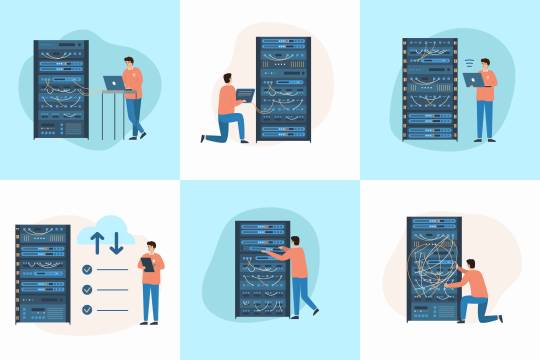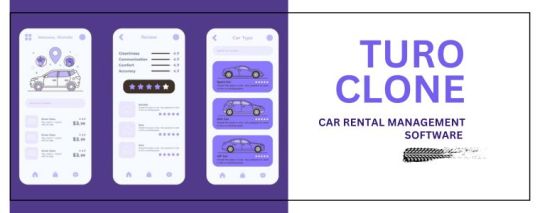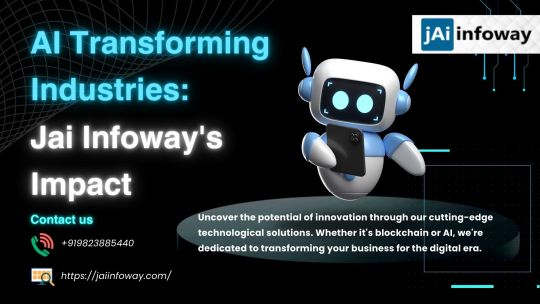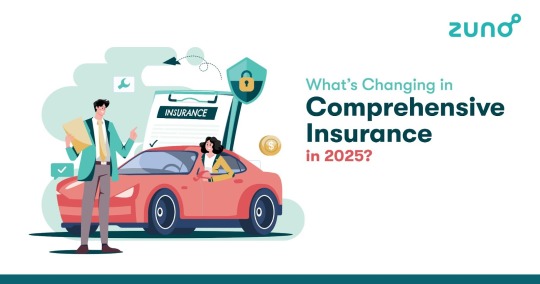#AI powered fleet solution
Explore tagged Tumblr posts
Text
#Robotaxi Market#Autonomous Taxi Services#Self-Driving Taxi Industry#Driverless Ride-Hailing Services#Future of Urban Mobility#AI-Powered Ride-Sharing#Robotaxi Fleet Deployment#Level 4 & Level 5 Autonomous Vehicles#Mobility-as-a-Service (MaaS)#Regulatory Challenges in Robotaxi Industry#Robotaxi Market Growth & Trends#Key Players in Autonomous Taxi Market#EV-Based Robotaxi Solutions#AI & Sensor Fusion in Robotaxis#Cost & Efficiency of Robotaxi Services#Consumer Adoption of Self-Driving Taxis#Infrastructure for Autonomous Ride-Hailing#Global Robotaxi Market Forecast#Robotaxi Technology Advancements
0 notes
Text
We married in my head, idc | G. Russell
Summary: George and Y/n, the two people who cannot stand each other in the friend group. Usually they could avoid each other, to keep up the spirit for the others, but what would happen if they actually had to work together?
A/N: I don't what I was thinking when writing this, it's a bit ✨extra✨

The last thing Y/n wanted on this trip was to be stuck on the side of a road in the middle of nowhere, arguing with George Russell about a flat tyre. And yet, here they were.
“I swear, this is your fault,” she huffed, arms crossed as she stared at the very obviously punctured tyre. “If you weren’t driving like we were in a bloody F1 race, maybe we wouldn’t be standing in the freezing cold right now.”
George let out an exasperated laugh, shoving his hands into his jacket pockets. “Oh, right, because I personally summoned a nail onto the road just to inconvenience you? You weren’t even in the car, Y/n.”
“Doesn’t mean you didn’t screw something up.”
Their friends, at first, ignored them. They were used to this; the constant bickering, the way George and Y/n could turn any situation into a battleground. But something about tonight, about being stranded in the cold with no immediate solution, made their patience snap.It had been this way since the day they met, and no one had any hope of it ever changing. Yet they couldn’t remove them both from the group. If one of them wasn’t there, the other one would ask about it and visa versa.
“Well, someone needs to help with this,” one of their friends sighed, shaking their head. “George, Y/n, make yourselves useful instead of trying to kill each other with words.”
“Over my dead body,” George muttered, kicking at a stray rock.
Y/n arched a brow. “Well, go lay down and die then, because I am not gonna be told what to do, especially not by you.”
George turned his head sharply to look at her, eyes narrowing. “Is that a threat?”
“Did it sound like a compliment?” she shot back.
Their friend groaned. “Oh, for the love of…"
"Just fucking stop talking!" Another friend suddenly yelled, spinning around to glare at them. “Do you two ever shut up?”
Y/n and George both turned, momentarily stunned at the outburst. “Excuse me?” Y/n asked, eyes narrowing.
“No. No excuses. I am sick and tired of your ridiculous little power struggle every fucking time we go anywhere. If it’s not the seating arrangement, it’s the music. If it’s not the music, it’s the fucking tyre. We are cold, we are tired, and we are not dealing with this anymore!” Alright, their friend had to admit, this was a bit over the top, but perhaps they would learn from it.
Another friend threw their hands in the air. “Seriously! Just fuck or fight and get it over with because we are done listening to you two act like children.”
George scoffed, crossing his arms. “That’s a bit dramatic-”
“Dramatic?!” their friend all but screeched. “I will walk home before I listen to another round of your petty insults! Grow the fuck up. You are not five. Get a fucking life.”
Even the others, usually content to let things slide, muttered in agreement, frustration evident on their faces. The weight of their annoyance hung thick in the cold air, pressing down on Y/n and George like a warning.
“Now, hold the flashlight and fix the fucking tyre," their friend snapped. "George, you work with cars. Use your magic and knowledge."
Grudgingly, they complied. With identical scowls, George crouched by the wheel well while Y/n held the flashlight, though she tilted it just slightly off course, her last act of defiance.
“For fuck’s sake, hold it properly,” he snapped, shoving her hand to adjust the angle.
She yanked it back. “Your existence gives me a headache. Go stand over there.”
“I can’t fix the damn tyre from over there.”
“Well, that’s unfortunate.”
George clenched his jaw, inhaling sharply through his nose before he reached for the lug wrench. Y/n expected him to snap again, but instead, there was a brief pause, a fleeting shift in the air between them. His hand brushed against hers, accidental, but enough to make her breath hitch slightly. They both froze for half a second too long, a moment stretched thin between their usual hostility and something neither of them wanted to acknowledge.
And then it was gone.
George cleared his throat and went back to loosening the bolts, while Y/n, for once, didn’t have a sharp remark ready. Instead, she silently adjusted the flashlight, this time actually holding it steady.
The tyre was finally changed, and the group wasted no time piling back into the two cars. The exhaustion of the ordeal had settled in, everyone eager to get home, but the lingering tension between George and Y/n still crackled in the air.
Y/n slid into the backseat, hoping to avoid sitting anywhere near George, but fate had other plans. He climbed in beside her, their legs accidentally brushing against each other in the cramped space. She huffed but didn’t move away. He didn’t either.
The car ride was unusually quiet at first, just the low hum of the road beneath them. Their friends, too drained to deal with another round of arguing, let the silence stretch. But Y/n could feel George’s presence beside her, every breath, every shift in his posture.
As the journey continued, the temperature inside the car started to rise, but the icy tension between them remained. Every now and then, a subtle glance or the way their knees bumped would cause a ripple of something unspoken, something neither of them had the energy to acknowledge outright.
“Don’t think this means I like you,” she muttered under her breath, eyes fixed on the passing scenery.
George turned his head slightly, amusement flickering in his eyes. “Wouldn’t dream of it.”
One of their friends sighed loudly, rubbing their temples. “Honestly, you two are exhausting. Just admit you want to rip each other’s clothes off and be done with it.”
Y/n felt heat rise to her cheeks. “Oh, piss off.”
George, for once, had nothing to say. He just smirked, shaking his head as he leaned back against the seat. Their friends weren’t wrong, but admitting that was out of the question.
As the drive continued, exhaustion started to take over. The steady hum of the car and the warmth of the enclosed space made Y/n’s eyelids heavy. Before she could stop herself, her head lolled slightly to the side, landing against George’s shoulder. He stiffened for a moment, glancing down at her, but he didn’t move away. If anything, he shifted slightly, making it more comfortable for her.
Their friends noticed immediately, exchanging silent, amused glances in the rearview mirror. No one dared to comment, not yet. But when, minutes later, George’s head slowly tipped, resting lightly against Y/n’s, the barely contained laughter from the front seat was impossible to ignore.
“I’m taking a picture,” one of them whispered, barely holding in a chuckle.
Another smiled. “This is the best thing that’s happened all day, probably all year.”
And yet, despite the quiet teasing, neither of them stirred. Maybe, just maybe, the war between them wasn’t as real as they wanted everyone to believe.
Taglist: @itsjustkhaos @crashingwavesofeuphoria @maryvibess @ironmaiden1313 @sltwins @heart-trees @npcmia @llando4norris
#George russell#f1#f1 imagine#formula 1#formula 1 x reader#f1 x reader#formula 1 imagine#formula 1 x you#formula one#f1 fanfic#George Russell x you#george Russell fluff#George Russell x reader#formula x reader#formula one x reader#formula one imagine#f1 fluff#f1 x you#f1 fic#ferrari#fanfic#motorsports#fluff#formula 1 fanfiction#f1 fanfiction#george russel imagine#george russel x y/n#george russel x reader
295 notes
·
View notes
Text

Based on the search results, here are some innovative technologies that RideBoom could implement to enhance the user experience and stay ahead of ONDC:
Enhanced Safety Measures: RideBoom has already implemented additional safety measures, including enhanced driver background checks, real-time trip monitoring, and improved emergency response protocols. [1] To stay ahead, they could further enhance safety by integrating advanced telematics and AI-powered driver monitoring systems to ensure safe driving behavior.
Personalized and Customizable Services: RideBoom could introduce a more personalized user experience by leveraging data analytics and machine learning to understand individual preferences and offer tailored services. This could include features like customizable ride preferences, personalized recommendations, and the ability to save preferred routes or driver profiles. [1]
Seamless Multimodal Integration: To provide a more comprehensive transportation solution, RideBoom could integrate with other modes of transportation, such as public transit, bike-sharing, or micro-mobility options. This would allow users to plan and book their entire journey seamlessly through the RideBoom app, enhancing the overall user experience. [1]
Sustainable and Eco-friendly Initiatives: RideBoom has already started introducing electric and hybrid vehicles to its fleet, but they could further expand their green initiatives. This could include offering incentives for eco-friendly ride choices, partnering with renewable energy providers, and implementing carbon offset programs to reduce the environmental impact of their operations. [1]
Innovative Payment and Loyalty Solutions: To stay competitive with ONDC's zero-commission model, RideBoom could explore innovative payment options, such as integrated digital wallets, subscription-based services, or loyalty programs that offer rewards and discounts to frequent users. This could help attract and retain customers by providing more value-added services. [2]
Robust Data Analytics and Predictive Capabilities: RideBoom could leverage advanced data analytics and predictive modeling to optimize their operations, anticipate demand patterns, and proactively address user needs. This could include features like dynamic pricing, intelligent routing, and personalized recommendations to enhance the overall user experience. [1]
By implementing these innovative technologies, RideBoom can differentiate itself from ONDC, provide a more seamless and personalized user experience, and stay ahead of the competition in the on-demand transportation market.
#rideboom#rideboom app#delhi rideboom#ola cabs#biketaxi#uber#rideboom taxi app#ola#uber driver#uber taxi#rideboomindia#rideboom uber
57 notes
·
View notes
Text

Kirkland Signature Love™
Now With 23% More Passion! (Margin of error: ±3%.)
Congratulations!
You have been matched with a Partner™ based on our advanced Compatibility Algorithm (patent pending). Your emotional ROI is projected to increase by 17% over the next fiscal year (results not guaranteed). Please review the Subscription Tiers before proceeding:
Subscription Tiers
Free Trial Love (Ad-Supported):
Enjoy fleeting attraction with periodic interruptions from our sponsors. (Standard messaging rates apply. Emotional fulfillment not included.)
Premium Love™:
Unlock exclusive features like consistent affection, good morning texts, and the perception of long-term stability (Terms & Conditions apply). Cancel anytime—breakup fees may apply.
Platinum Limerence™:
Experience obsessive devotion and unchecked euphoria, guaranteed to last between six and twenty-four months before rapid depreciation. Warning: Side effects may include anxiety, jealousy, and existential despair. (For best results, do not confuse with Actual Commitment™.)
Enterprise Love™ (For Power Users):
Co-branded relationships with scalable intimacy solutions and priority conflict resolution. Includes Quarterly Performance Reviews to assess emotional KPIs.
Need a breakup? We’ve got you covered!
Introducing Seamless Split™—a hassle-free offboarding experience with automated excuse generators and pre-written closure texts.
Upgrade to Ghost Mode™ for instant disappearance! For a warmer, human touch, try Mutual Breakup Pro™, featuring a fully scripted "It’s Not You, It’s Me" dialogue and an optional nostalgic montage.
At Costco, we believe Love is Not Enough.™ That’s why we provide a full-service relationship experience, complete with scheduled date nights, conflict resolution scripts, and AI-generated anniversary messages—customized using proprietary Emotional Sentiment Tracking™ and past text analysis for hyper-personalized romance.
Because love isn’t about connection— It’s about retention.
Love. Loyalty. Auto-Renewal.
Proudly Serving You™.
-2/14/25
#poetry#poem#poems on tumblr#poems and poetry#ai art#original poem#spirituality#spilled words#spilled ink#spilled thoughts#love#love quotes#self love#lovers#relationship#feelings#i love you#valentines day#relationships#mental health#mental illness#chatgpt#kirkland signature#costco#commercial#commercialism#consumerism#consumer culture#consumer insights#consumer behavior
7 notes
·
View notes
Text
The ZERO System- Why you shouldn’t let a battle algorithm determine your life goals


-Arrival (2016)
The ZERO system is a program that interfaces between a pilot and a Mobile Suit.
The purpose of the system is to enhance a pilot’s natural abilities by increasing their reaction time and accuracy, even allowing the pilot to “feel” the response of their Mobile Suit as though it were an extension of their own body, and to provide an adaptive, real-time battle plan that suggests the most advantageous course of action based on accumulated battle data and iterative projections of likely outcomes.
How exactly the ZERO system does all this is a little unclear– but we do know that it’s open-source, DRM free, and runs off a floppy disc.
The future is the 90’s!

--To start off with a quick overview, there are two mobile suits installed with a permanent copy of the ZERO system: the Wing Zero, which has it built into the cockpit, and the Epyon, which displays the system data via a flight suit helmet (technically the Epyon’s system was reverse-engineered without the benefit of the original ZERO program, but its effects are identical). There is also a modified version of the system that was utilized to coordinate the movements of Libra's mobile doll fleet– a novel use of the technology that elevated the otherwise limited AI of the Dolls to monstrous effect by giving them the intuition and oversight of a human mastermind.

But! Something worth noting is that the ZERO system isn’t the only battle-enhancing algorithm for mobile suits!
In a brief but significant moment in episode 10, we learn that OZ has a machine-learning program all of its own, and it's installed on the (then newly developed) Taurus mobile suits.
“There is a problem with the Taurus. It has the ability to learn from accumulated battle data. I’d like to trust OZ’s control system, but there’s still the chance that the machine will ignore the pilot’s commands and move on its own. If the command to kill overrides the pilot, the consequences could be significant.” –Doctor J

Who wrote the program for the Taurus suits? The most likely answer is Chief Engineer Tuberov, the man responsible for the Mobile Doll AI system, which is no doubt the successor of the Taurus AI. However, there was a lot of cooperation and cross-pollination of ideas between the original creators of mobile suits; Tuberov, Howard, and the five Gundam scientists were all involved in the earliest days of MS development, so it's not inconceivable that Doctor J is aware of the dangers of the Taurus’ AI because he helped develop it.
And Doctor J has good reason to consider the Taurus AI dangerous, because if it’s anything like the ZERO system, it’s the absolute last thing you’d want a power-hungry global military organization to have access to.
It’s not safe in the wrong hands; hell, it’s not even safe in the right hands. There’s a reason ZERO wasn’t installed on the finalized Gundams, and was left buried inside the files of a discarded blueprint.
- ----------------- -
The ZERO system is a GAN : it uses the data sets of previously recorded battles and the pilot's biological feedback to generate potential outcomes for a given fight, and then evaluates those results based on their likelihood and probability of success, in a zero-sum game where "success" is always defined by the total elimination of enemies.
Like all algorithmic processes, it amplifies certain results based on what data it's given and how it is trained; it's possible to use ZERO to predict the most likely, or most advantageous course of action for a pilot's future-- as long as that future is combative. And because the system is only trained to recognize Win States, Enemies, and Vulnerabilities, every future is going to be combative.
It's not trained to look for alternative solutions to combat, or make predictions about a life NOT spent inside a mobile suit-- it can only continue to generate pass/fail scenarios that lead, by the most efficient means, to the ultimate win state: the elimination of all enemies, all future enemies, all potential enemies.

--Whatever the mechanism is that allows the ZERO system to interface with a pilot’s brain, it is possible for a good pilot, who is aware of the system and is prepared for its effects, to mitigate how much control the system has over their mind and body, and successfully moderate the interposition of the machine's priorities and their own-- but it takes an enormous amount of mental and physical conditioning to override ZERO, and the strain on the pilot is significant.
The ZERO system gives a pilot the best chance of success by grabbing them directly by the brain chemistry, heightening awareness, speeding up reflexes, and inducing an almost trance-like state of hyperfocus that eliminates “distractions”, and ignores any physical and mental barriers that might get in the way of victory.
Unfortunately, what constitutes a “distraction” in the eyes of the machine is not always in line with the pilot’s conscience, and what it considers a “weakness” is often the biological feedback of strain and bodily distress. If left unchecked, the system overwhelms the pilot and can make them keep fighting through unsafe levels of exhaustion and injury, and in extreme situations, over-stimulation from the system itself can cause brain hemorrhaging.
While assessing all of the potential outcomes of a given battle, it takes into account every likely scenario up to and including the pilot’s own death. It will tell you if you’re likely to die. It will show you all the ways you are likely to die. If you let it dig too far into your nervous system, it will in fact let you feel how you’ll die, pumping your adrenaline levels up to the screaming pitch you’d experience if it were actually happening.

Even if a pilot is technically capable of withstanding ZERO, the psychological effect of using in the first place comes with its own insidious dangers. The temptation to let the machine ride is a powerful one; it makes you faster and stronger than everyone else, it lets you see things before they happen, it allows you to stop thinking about complicated questions of right and wrong and simply focus on the most immediate action necessary for survival and success, it takes away the confusion of competing moral imperatives.
ZERO grants a human the clarity and singularity of purpose of a machine.
For those seeking refuge in numbness, this is a soporific that allows a pilot to take retributive action against their perceived enemy without feeling, removing grief and replacing it with vindication; and for those who are insecure, or weak and hungry for power, it is fatally intoxicating.


ZERO can only show a pilot the quickest way from point A to point B.
It does not take into account any factors besides efficiency. It does not have a conscience, it does not have external priorities, and it does not value life.
If you give it a problem to solve like “how do I win”, no solution is off the table-- it will remove any and all obstacles in the way of victory, and by far the most common obstacle is the fact that most people have things that they care about, and things they are unwilling to do.
For instance, the safety of one's allies and innocent third parties is not a parameter the ZERO system is equipped to recognize.
If using your beam canon is the most effective way to clear the battlefield but you're not using it because there's a Colony in your line of fire-- well, that's easy to fix. If your concern for an ally is holding you back from fighting without reservation, that's an easy fix too.


- ----------------- -
The scientists responsible for creating ZERO knew what a monstrosity it was that they had built, and did not implement it in the finalized Gundams. But once it was unleashed on the world anyway, they surmised that the only way to use the system wisely was to become on one’s own terms what ZERO would have tried to force you to become anyway: a soldier with a clearly defined goal, who is strong enough and skilled enough to complete their objectives, and who has nothing holding them back-- therefore, someone who the machine could not easily manipulate.
During their time in space, the Gundam pilots are isolated, scattered, and lack a clear purpose. Their Colonies betrayed them and their loyalties continue to be used against them-- in that atmosphere, the convenience of a system that can select the most advantageous target is obvious, but at the same time, a struggling pilot operating alone is at the greatest risk of being overwhelmed by it. This is why the Doctors advise the pilots to become "perfect soldiers"-- or else, go insane.
Important Clarification: This is a “perfect soldier” in nearly the opposite sense of how the Romefeller Eyebrow Brigade would define a True Soldier! What the Doctors mean by a “perfect soldier” is simply a fighter with a clear objective and few tactical weaknesses that could be exploited.

The ideal example of this "perfect soldier" is obviously Wufei:
Wufei already thinks in terms of absolutes; he acts according to the strictest assessment of who is Evil, and therefore an Enemy; he fights almost exclusively alone, relying on his own considerable strength to achieve his goal of enacting justice; and he habitually shuns any close attachment that might complicate his path forward.
It's no wonder that when Wufei pilots the Wing Zero, all the system does is confirm what he already held to be true. His goal was always to eliminate anyone trying to escalate militarism, which means defeating both Treize and Zechs, and as a slight compromise, cooperating with his fellow Gundam pilots as a team.
It’s as though Wufei’s brain was already running on the ZERO system. And since he’s already equipped to make his own tactical decisions in the field, he has no need of an external system to tell him what to do. ZERO has nothing to offer Wufei, and there is nothing for it to exploit.
But it's not just Wufei who can resist using the system: even Quatre-- who is in most ways the polar opposite of Wufei, and who at his lowest point fell prey to the ZERO before anyone realized what it was-- is eventually able to master the system. Once Quatre is armed with the knowledge of what the system is intended for and knows exactly who he has to fight, he is able to use it in a way that maximizes his natural tactical abilities, and resists all its negative effects. And upon gaining ZERO's insight, Quatre realizes that he, too, no longer needs it.

- ----------------- -
So what it boils down to is this: A pilot with superior skills and a firm resolve can operate effectively without the ZERO system, and a pilot with superior skills an NO firm resolve, or with too many vulnerabilities, will find themselves struggling against it to their detriment.
Either way, it is up to the pilot to navigate the available outcomes presented by their surroundings, and choose the best course of action according to their logic and intuition-- and wouldn't this still be true with NO artificial source of input?
The ZERO system may enhance human abilities by brute force, but the processes it accelerates are already present within the pilot. In fact, it’s hardly more than a limited, mechanically-accelerated version of what the senses and nervous system do already.
Like all current examples of machine learning, it presents the illusion of an objective, autonomous process that can stand in for human input. But it isn’t a true “artificial intelligence”-- and even if it were, it would not “transcend” or replace the need for human input. It is only a means of sorting and arranging data sets that come from humans, and must be interpreted and acted on by humans, in order to have any physical effect.
--We know a lot more about the dangers of algorithms and machine-learning and automation now in the 2020’s than we did in the 1990’s, but between the ZERO system and the Mobile Dolls, I think Gundam Wing did a damn good job of illustrating them.
Ultimately, it is always a human who makes the decisions, and is responsible for the consequences. Surrendering that responsibility to a machine is not only morally reprehensible, it is in fact, not possible– a human built the machine, and a human made use of the machine, and a thousand, thousand collective moments of human decision-making led to whatever outcome the machine facilitated.
The world hasn’t yet arrived at the techno-singularity, either in the present or in A.C.195, and those who are eager to pass the blame prematurely to “AI” are usually those who wish to avoid being held accountable for their actions.

Perhaps it’s a surprise that the only person to use the ZERO system for something other than combat is Treize. For the confined leader of OZ, the system is a magic eight ball to scry the future with.
At the time of creating the Epyon, the system did not show him a viable path forward, or at least, not one he considered acceptable. Treize interpreted this as meaning he had NO future, but I can’t help but wonder if he was asking the wrong sort of question for a predictive battle algorithm to answer.
...Or maybe, the answer he got was “Ask Again Later”, which, actually, would have been correct.

#gundam wing#ZERO system#Wing Zero#read to the end for a surprise!#parsing post#gundam wingtionary#wingwatcher's toolkit#art by me
77 notes
·
View notes
Text
Best Taxi App Development Company in India – Maxtra Technologies
In the fast-growing ride-hailing industry, choosing the right taxi app development company in India is crucial for launching a successful taxi business. Maxtra Technologies is a leading taxi app solution provider with innovative and scalable applications that are tailored to meet client requirements.
As a top taxi app development company in associative markets, Maxtra Technologies has expertise in developing robust, user-friendly, and feature-rich taxi booking applications with real-time tracking, seamless payment integration, and AI-powered route optimization for high performance and reliability. Whether you are a startup or an established taxi service, their team delivers customized solutions that enhance user experience and operational efficiency.
Maxtra Technologies follows a customer-centric approach, leveraging advanced technologies such as AI, IoT, and cloud computing to create efficient taxi applications. Their solutions include driver and passenger apps, an admin panel, and advanced analytics for better fleet management. By focusing on security, scalability, and seamless functionality, Maxtra helps businesses stay ahead in the competitive ride-hailing market.
If you’re looking for the best taxi app development company in India, Maxtra Technologies is your go-to partner. Their expertise in taxi app development companies in associative sectors ensures businesses get high-quality, cost-effective, and future-ready taxi applications.
For top-tier taxi app solutions, trust Maxtra Technologies to transform your vision into a reality. Call to contact them for developing your future taxi app.
#mobile app development company#mobile application development#custom mobile app development company#app development#mobile app development#mobile app development in india#mobile app development company in india#app development company
2 notes
·
View notes
Text
Edge Computing Market Disruption: 7 Startups to Watch

Edge Computing Market Valuation and Projections
The global edge computing market is undergoing a transformative evolution, with projections estimating an edge computing market size escalation from USD 15.96 billion in 2023 to approximately USD 216.76 billion by 2031, marking a compound annual growth rate (CAGR) of 33.6%. This unprecedented trajectory is being driven by rising demand for real-time data processing, the proliferation of Internet of Things (IoT) devices, and the deployment of 5G infrastructure worldwide.
Request Sample Report PDF (including TOC, Graphs & Tables): https://www.statsandresearch.com/request-sample/40540-global-edge-computing-market
Accelerated Demand for Real-Time Data Processing
Edge computing is revolutionizing the digital ecosystem by decentralizing data processing, shifting it from core data centers to the edge of the network—closer to the point of data generation. This architectural transformation is enabling instantaneous insights, reduced latency, and optimized bandwidth usage, which are critical in sectors requiring rapid decision-making.
Industries such as automotive, healthcare, telecommunications, and manufacturing are leading adopters of edge technologies to empower smart operations, autonomous functionality, and predictive systems.
Get up to 30%-40% Discount: https://www.statsandresearch.com/check-discount/40540-global-edge-computing-market
Edge Computing Market Segmentation Analysis:
By Component
Hardware
Edge computing hardware includes edge nodes, routers, micro data centers, servers, and networking gear. These devices are designed to endure harsh environmental conditions while delivering low-latency data processing capabilities. Companies are investing in high-performance edge servers equipped with AI accelerators to support intelligent workloads at the edge.
Software
Software solutions in edge environments include container orchestration tools, real-time analytics engines, AI inference models, and security frameworks. These tools enable seamless integration with cloud systems and support distributed data management, orchestration, and real-time insight generation.
Services
Edge services encompass consulting, deployment, integration, support, and maintenance. With businesses adopting hybrid cloud strategies, service providers are essential for ensuring compatibility, uptime, and scalability of edge deployments.
By Application
Industrial Internet of Things (IIoT)
Edge computing plays a vital role in smart manufacturing and Industry 4.0 initiatives. It facilitates predictive maintenance, asset tracking, process automation, and remote monitoring, ensuring enhanced efficiency and minimized downtime.
Smart Cities
Municipalities are leveraging edge computing to power traffic control systems, surveillance networks, waste management, and public safety infrastructure, enabling scalable and responsive urban development.
Content Delivery
In media and entertainment, edge solutions ensure low-latency content streaming, localized data caching, and real-time audience analytics, thereby optimizing user experience and reducing network congestion.
Remote Monitoring
Critical infrastructure sectors, including energy and utilities, employ edge computing for pipeline monitoring, grid analytics, and remote equipment diagnostics, allowing for proactive threat identification and response.
By Industry Vertical
Manufacturing
Edge solutions in manufacturing contribute to real-time production analytics, defect detection, and logistics automation. With AI-powered edge devices, factories are becoming increasingly autonomous and intelligent.
Healthcare
Hospitals and clinics implement edge computing to support real-time patient monitoring, diagnostic imaging processing, and point-of-care data analysis, enhancing treatment accuracy and responsiveness.
Transportation
The sector is utilizing edge technology in autonomous vehicle systems, smart fleet tracking, and intelligent traffic signals. These systems demand ultra-low latency data processing to function safely and efficiently.
Energy & Utilities
Edge computing enables smart grid optimization, renewable energy integration, and predictive fault detection, allowing utilities to manage resources with greater precision and sustainability.
Retail & Others
Retailers deploy edge devices for personalized marketing, real-time inventory management, and customer behavior analysis, enabling hyper-personalized and responsive shopping experiences.
Key Drivers Behind Edge Computing Market Growth:
1. IoT Proliferation and Data Deluge
With billions of connected devices transmitting real-time data, traditional cloud architectures cannot meet the bandwidth and latency demands. Edge computing solves this by processing data locally, eliminating unnecessary round trips to the cloud.
2. 5G Deployment
5G networks offer ultra-low latency and high throughput, both essential for edge applications. The synergy between 5G and edge computing is pivotal for real-time services like AR/VR, telemedicine, and autonomous navigation.
3. Hybrid and Multi-Cloud Strategies
Enterprises are embracing decentralized IT environments. Edge computing integrates with cloud-native applications to form hybrid infrastructures, offering agility, security, and location-specific computing.
4. Demand for Enhanced Security and Compliance
By localizing sensitive data processing, edge computing reduces exposure to cyber threats and supports data sovereignty in regulated industries like finance and healthcare.
Competitive Landscape
Leading Players Shaping the Edge Computing Market
Amazon Web Services (AWS) – Offers AWS Wavelength and Snowball Edge for low-latency, high-performance edge computing.
Microsoft Azure – Delivers Azure Stack Edge and Azure Percept for AI-powered edge analytics.
Google Cloud – Provides Anthos and Edge TPU for scalable, intelligent edge infrastructure.
IBM – Offers edge-enabled Red Hat OpenShift and hybrid edge computing solutions for enterprise deployment.
NVIDIA – Powers edge AI workloads with Jetson and EGX platforms.
Cisco Systems – Delivers Fog Computing and edge networking solutions tailored to enterprise-grade environments.
Dell Technologies – Supplies ruggedized edge gateways and scalable edge data center modules.
Hewlett Packard Enterprise (HPE) – Delivers HPE Edgeline and GreenLake edge services for data-intensive use cases.
FogHorn Systems & EdgeConneX – Innovators specializing in industrial edge analytics and data center edge infrastructure respectively.
Edge Computing Market Regional Insights
North America
A mature digital infrastructure, coupled with high IoT adoption and strong cloud vendor presence, makes North America the dominant regional edge computing market.
Asia-Pacific
Driven by rapid urbanization, smart city initiatives, and industrial automation in China, India, and Japan, Asia-Pacific is projected to experience the fastest CAGR during the forecast period.
Europe
The region benefits from strong government mandates around data localization, Industry 4.0 initiatives, and investments in telecom infrastructure.
Middle East and Africa
Emerging adoption is evident in smart energy systems, oilfield monitoring, and urban digital transformation projects.
South America
Growth in agritech, mining automation, and public safety systems is propelling the edge market in Brazil, Chile, and Argentina.
Purchase Exclusive Report: https://www.statsandresearch.com/enquire-before/40540-global-edge-computing-market
Edge Computing Market Outlook and Conclusion
Edge computing is not just an enabler but a strategic imperative for digital transformation in modern enterprises. As we move deeper into an AI-driven and hyperconnected world, the integration of edge computing with 5G, IoT, AI, and cloud ecosystems will redefine data management paradigms.
Businesses investing in edge infrastructure today are setting the foundation for resilient, intelligent, and real-time operations that will determine industry leadership in the years ahead. The edge is not the future—it is the present frontier of competitive advantage.
Our Services:
On-Demand Reports: https://www.statsandresearch.com/on-demand-reports
Subscription Plans: https://www.statsandresearch.com/subscription-plans
Consulting Services: https://www.statsandresearch.com/consulting-services
ESG Solutions: https://www.statsandresearch.com/esg-solutions
Contact Us:
Stats and Research
Email: [email protected]
Phone: +91 8530698844
Website: https://www.statsandresearch.com
1 note
·
View note
Text
How to Optimize Transportation Management in Logistics for Cost Efficiency

Introduction Transportation is a key component of logistics and supply chain management, often making up as much as 50% of total logistics expenses. As fuel prices fluctuate, regulatory demands increase, and supply chains face disruptions, businesses must prioritize optimizing transportation management to lower costs and enhance efficiency. By implementing strategic transportation solutions, companies can reduce operational costs, improve delivery timelines, boost customer satisfaction, and increase profits.
This guide delves into effective strategies to optimize transportation management, reduce costs, and drive operational improvements.
Why Transportation Management is Crucial for Logistics
Efficient transportation management provides significant benefits to businesses, including:
Lower Operational Costs – Reduce fuel, labor, and storage expenses.
Improved Supply Chain Efficiency – Ensure timely deliveries and minimize delays.
Better Fleet Utilization – Optimize vehicle capacity and route efficiency.
Increased Profit Margins – Use resources effectively for greater cost control.
Enhanced Customer Satisfaction – Offer faster, reliable deliveries.
Without effective transportation management, businesses risk delays, increased costs, and reduced profitability.
Key Strategies for Optimizing Transportation Management and Reducing Costs
1. Embrace Route Optimization and Smart Planning
Inefficient routing leads to higher fuel consumption, longer delivery times, and escalated transportation costs.
Best Practices for Route Optimization:
Utilize AI-powered software to determine the most efficient routes.
Avoid traffic congestion and toll roads to save on time and costs.
Optimize multi-stop routes to enhance delivery efficiency.
Monitor road conditions and weather to prevent potential delays.
Technology to Use:
Google Maps API – Real-time traffic updates and optimized route suggestions.
AI-driven Route Planners (Locus, Route4Me, OptimoRoute) – Smart routing solutions to reduce fuel consumption and improve delivery times.
2. Leverage Multimodal Transportation for Cost Efficiency
Multimodal transportation combines different transport methods (road, rail, sea, air) to create more cost-effective logistics solutions.
Benefits of Multimodal Transport:
Cost Savings – Rail and sea transport lower long-distance shipment costs.
Sustainability – Rail and sea transport are more eco-friendly than road transport.
Faster Shipments – Combining air and road transport expedites urgent deliveries.
Example:
Shipping from Mumbai to Delhi:
Use rail for bulk shipments (cost-effective).
Use trucks for last-mile delivery (ensures timely service to the customer).
3. Reduce Fuel Costs with Effective Fuel Management
Fuel is one of the highest expenses in logistics, and minimizing fuel consumption can have a significant impact on overall transportation costs.
Tips for Reducing Fuel Costs:
Switch to fuel-efficient vehicles, such as electric or hybrid trucks.
Monitor driver behavior to reduce idling, speeding, and harsh braking.
Plan routes with lower fuel costs by avoiding high-price fuel areas.
Implement fuel card programs to get discounts and rebates on bulk fuel purchases.
Technology to Use:
Geotab Fuel Management Software – Tracks fuel usage and driver performance to improve efficiency.
Fleet Complete – Provides real-time tracking and fuel efficiency insights.
4. Optimize Fleet Utilization & Maintain Vehicles
Inefficient fleet management, including underused vehicles and poor maintenance, can lead to higher operating costs.
Fleet Optimization Tips:
Consolidate shipments to fill vehicles to capacity and reduce unnecessary trips.
Use predictive maintenance to prevent breakdowns and costly repairs.
Ensure regular vehicle servicing to extend the life of the fleet and minimize unplanned downtime.
Track idle time and driver efficiency to reduce fuel waste.
Technology to Use:
Fleet Management Systems (Samsara, Verizon Connect) – Monitor fleet utilization in real-time.
Predictive Maintenance Software (Uptake, Pitstop) – Avoid breakdowns by identifying potential issues early.
5. Improve Warehouse & Distribution Efficiency
Reducing the distance between warehouses and end customers can significantly lower transportation costs.
Warehouse Optimization Techniques:
Set up regional distribution centers to shorten delivery distances.
Optimize inventory storage for faster order fulfillment.
Automate warehouse processes using robotics and AI to improve efficiency.
Technology to Use:
Warehouse Management Systems (WMS) – Automate inventory and dispatch (Fishbowl, NetSuite, SAP EWM).
Automated Sorting and Packing Solutions – Improve warehouse operations (Honeywell Intelligrated, GreyOrange Robotics).
6. Negotiate Better Deals with Logistics Providers
Businesses often overpay for transportation services due to poor negotiations with logistics providers.
How to Reduce Freight Costs:
Compare multiple logistics providers before making final agreements.
Negotiate discounts for bulk shipments or high-volume contracts.
Explore third-party logistics (3PL) options for more flexible and competitive pricing.
Leverage freight bidding platforms to secure the best deals.
Top 3PL Providers in India:
Everfast Freight Pvt. Ltd. – Offers a range of logistics solutions.
Verfast Freight Forwarders Pvt. Ltd. – Specializes in customs clearance and freight forwarding.
Blue Dart Express Ltd. – Reliable air and road freight services.
7. Enhance Supply Chain Visibility with Real-Time Tracking
Limited visibility into shipments can cause delays, lost goods, and higher costs.
Ways to Improve Visibility:
Use GPS and IoT sensors to provide real-time tracking updates.
Offer customers live tracking features to increase transparency.
Utilize data analytics to predict delays and make proactive adjustments.
Technology to Use:
IoT Logistics Trackers (Roambee, Intel IoT Fleet Management) – Real-time monitoring of shipments.
AI-Powered Predictive Analytics (ClearMetal, FourKites) – Forecast and prevent shipment delays.
How Everfast Freight Pvt. Ltd. Helps Optimize Transportation Management
Everfast Freight Pvt. Ltd. specializes in innovative logistics solutions to help businesses optimize transportation management:
AI-Based Route Optimization – Reduce fuel costs and delivery times with advanced routing.
Multimodal Freight Solutions – Combine Road, rail, air, and sea transport for the best pricing.
Customs Clearance & Compliance – Streamline global trade with efficient customs processes.
Real-Time Tracking & Fleet Management – Full transparency across your supply chain.
Affordable 3PL Services – Bulk shipping discounts and flexible logistics options.
Emerging Trends in Transportation Management
Autonomous Vehicles & AI-Driven Fleet Management – Self-driving trucks to reduce labor costs and improve efficiency.
Hyperloop & High-Speed Rail – Faster intercity freight transport.
Sustainable Logistics – Adoption of electric trucks and alternative fuels for greener operations.
Blockchain in Freight Management – Increased security and transparency in logistics records.
Conclusion
Optimizing transportation management is essential for lowering costs, improving supply chain efficiency, and boosting profitability. By adopting advanced technology, data-driven planning, and strategic partnerships, businesses can significantly reduce transportation expenses while improving operations. Partnering with Everfast Freight Pvt. Ltd. ensures access to AI-driven optimization, multimodal transport services, and cost-effective logistics solutions.
Looking for a trusted logistics partner? Contact Everfast Freight Pvt. Ltd. today!
#logistics#shipping#transportation#cargo shipping#sea freight#freightforwarding#transport#air cargo#cargo services
1 note
·
View note
Text
Build a Turo Clone | Top Features to Include in Your Car Rental App

In the age of digital convenience, the car rental industry has undergone a massive transformation. Gone are the days when people had to visit rental agencies physically, fill out lengthy paperwork, and wait for approvals. Today, platforms like Turo have revolutionized car rentals, offering users a seamless way to rent and list vehicles with just a few taps on their smartphones. If you're considering developing a Turo clone, you're on the right path to tapping into the booming car-sharing market. But what does it take to create a car rental app like Turo? Which features make the difference between a mediocre app and a market-leading one?
Let’s dive into the essential aspects of building a Turo-like app, including the core features, development process, and the role of a reliable on-demand app development company in bringing your vision to life.
Why Build a Turo Clone?
The car rental industry is growing exponentially, fueled by increasing demand for flexible and cost-effective mobility solutions. Traditional car rental companies often come with rigid rules and high rental costs, which is why peer-to-peer (P2P) car-sharing platforms like Turo have gained immense popularity.
Here’s why launching a Turo clone is a lucrative idea:
High Market Demand: The demand for car-sharing apps is increasing as users prefer affordable, hassle-free rentals over traditional agencies.
Scalable Business Model: P2P car rentals generate revenue through service fees, subscription models, and add-ons like insurance.
Minimal Inventory Investment: Unlike conventional rental businesses, you don’t need to own a fleet of cars; users list their own vehicles.
Expanding Sharing Economy: As more consumers embrace the sharing economy, launching a Turo-like app is a timely and profitable venture.
But building a car rental management software that replicates Turo’s success is no small feat. It requires careful planning, robust technology, and an intuitive user experience.
Key Features to Include in Your Turo Clone
If you want to create a car rental app like Turo, you need to incorporate features that enhance usability, security, and efficiency. Let’s break down the must-have features:
1. User-Friendly Registration & Profile Management
A smooth onboarding process is crucial. Allow users (both renters and car owners) to sign up using email, phone numbers, or social media accounts. The profile management section should include:
ID verification (driver’s license, passport)
Profile completion status
Rental history
Reviews & ratings
A well-structured car rental management software ensures seamless user interactions from the start.
2. Advanced Search & Filtering Options
A powerful search mechanism is essential for finding the right vehicle quickly. Your app should allow users to filter cars based on:
Vehicle type (sedan, SUV, luxury, electric, etc.)
Rental duration (hourly, daily, weekly)
Pricing range
Location-based availability
AI-powered recommendations can enhance the search experience by suggesting cars based on past preferences.
3. Seamless Booking System
Your Turo clone should offer a frictionless booking experience. Essential aspects include:
Instant booking vs. request-based booking
Flexible pricing options
Secure payment gateway integration
Cancellation policies
Users should be able to reserve a car within seconds, eliminating unnecessary steps in the process.
4. Secure Payment Gateway & Wallet Integration
A robust payment system ensures smooth transactions. Features like:
Credit/debit card payments
PayPal, Stripe, or Apple Pay integration
In-app wallets for faster checkouts
Split payments (for ride-sharing features)
Secure payments build user trust, a critical aspect of any Turo-like app.
5. Real-Time GPS Tracking & Navigation
Live location tracking is essential for both car owners and renters. With integrated GPS tracking, users can:
Find nearby rental vehicles
Get real-time navigation assistance
Monitor the rented car’s location
This enhances security and improves overall service quality.
6. Ratings, Reviews & Feedback System
User-generated ratings and reviews help maintain credibility. A two-way feedback system (where both renters and owners review each other) ensures reliability and trustworthiness.
7. Damage Reporting & Insurance Integration
Unlike traditional rental services, P2P car rentals require robust insurance policies to cover damages. Your car rental management software should include:
Instant damage reporting
Insurance coverage details
Claim processing system
This feature enhances the safety net for both car owners and renters.
8. Push Notifications & Alerts
Timely notifications keep users engaged and informed. These can include:
Booking confirmations & reminders
Payment updates
Special offers & discounts
Vehicle pick-up and drop-off alerts
An AI-driven Turo-like app can personalize notifications based on user activity.
9. Admin Dashboard for Business Insights
A whitelabel property management software or admin panel is necessary for managing the platform. The dashboard should include:
User activity monitoring
Revenue analytics
Dispute resolution system
Customer support module
This ensures smooth platform operations and growth tracking.
The Development Process: How to Build a Turo Clone?
Developing a Turo clone isn’t just about coding an app—it involves strategic planning and execution. Here’s a roadmap to get started:
Step 1: Market Research & Business Model Planning
Analyze competitors like Turo, Getaround, and Zipcar
Decide on your revenue model (commission-based, subscription, etc.)
Identify your target audience
Step 2: Choose the Right Technology Stack
For a scalable, high-performing app, consider:
Backend: Node.js, Python, Ruby on Rails
Frontend: React Native, Flutter
Database: MongoDB, Firebase
Cloud Hosting: AWS, Google Cloud
A reliable on-demand app development company can help you select the best tech stack.
Step 3: UI/UX Design & App Development
A seamless, intuitive interface is key. Your app should offer a smooth booking experience with minimal clicks.
Step 4: Testing & Deployment
Perform rigorous testing for bugs and security loopholes
Launch a beta version for user feedback
Deploy the app across iOS and Android platforms
Why Work with an On-Demand App Development Company?
Building a Turo clone requires expertise in mobile app development, security, and user experience design. Partnering with an on-demand app development company ensures:
Custom development tailored to your business needs
Scalability for future expansion
Seamless API integration (for payments, GPS, insurance, etc.)
Ongoing maintenance and support
A professional team can help you navigate challenges and ensure a successful product launch.
Final Thoughts
Developing a Turo-like app is a profitable venture, provided you focus on user-centric features, seamless transactions, and a scalable business model. By incorporating the right technology and working with a trusted on-demand app development company, you can build car rental management software that stands out in the market.
Whether you're an entrepreneur looking to disrupt the mobility industry or a business aiming to expand into car rentals, now is the perfect time to create a Turo clone that meets modern consumer demands.
1 note
·
View note
Text
AI Transforming Sectors: The Jai Infoway Method

In today's rapidly evolving digital landscape, Artificial Intelligence (AI) stands as a game-changer across various sectors. At Jai Infoway Pvt. Ltd., we leverage the transformative potential of AI to revolutionize industries, driving efficiency, innovation, and growth. Let's delve deeper into how AI is transforming the automotive sector, healthcare industry, and accounts and billing management, and how Jai Infoway is leading the charge in this technological revolution.
Automotive Sector:
AI and other technical breakthroughs are causing a major upheaval in the automobile business.
At Jai Infoway, we recognize the potential of AI to reshape the automotive landscape, from manufacturing to sales and service.
By leveraging AI algorithms to analyze vast amounts of data from sensors and vehicle diagnostics, automotive companies can predict potential maintenance issues before they occur. This proactive approach to maintenance not only minimizes downtime but also reduces repair costs and improves overall fleet management efficiency.
AI is also revolutionizing the driving experience through the development of autonomous vehicles. These vehicles rely on AI-powered systems to perceive their environment, make decisions, and navigate safely. By combining data from cameras, LiDAR, and other sensors with advanced AI algorithms, self-driving cars can interpret complex traffic scenarios, anticipate potential hazards, and adapt to changing road conditions.
Furthermore, AI-powered chatbots and virtual assistants are enhancing customer engagement and support services in the automotive sector. These intelligent systems provide personalized assistance, answer queries, and facilitate seamless communication between customers and automotive companies, enhancing satisfaction and loyalty.
Healthcare Sector:
In the healthcare industry, AI is revolutionizing patient care, administrative tasks, and medical research. At Jai Infoway, we leverage AI-driven solutions to improve healthcare outcomes, streamline operations, and enhance decision-making processes.
AI-powered diagnostic systems analyze medical images such as X-rays, MRIs, and CT scans, detecting abnormalities and assisting healthcare professionals in making accurate diagnoses. This technology enables early detection of diseases, improves treatment planning, and enhances patient outcomes.
AI is also transforming healthcare administration through automation. Tasks such as appointment scheduling, patient billing, and medical coding can be automated using AI-driven solutions, reducing administrative burden and improving efficiency. By streamlining administrative workflows, healthcare providers can focus more on delivering high-quality care to patients.
Furthermore, AI-driven predictive analytics is enabling healthcare organizations to identify trends, predict disease outbreaks, and optimize resource allocation. By analyzing large volumes of patient data, AI algorithms can provide valuable insights into population health trends, helping healthcare providers proactively address healthcare needs and improve population health management.
Accounts and Billing Management:
In the realm of accounts and billing management, AI is streamlining financial processes, enhancing accuracy, and reducing manual workload. At Jai Infoway, we develop AI-driven solutions to automate repetitive tasks, mitigate errors, and optimize financial operations.
One of the key applications of AI in accounts and billing management is in invoice processing. AI-powered systems can extract data from invoices, verify accuracy, and automate payment processing workflows, reducing processing time and improving efficiency. By automating invoice processing, organizations can accelerate payment cycles, improve cash flow management, and reduce operational costs.
AI is also transforming financial forecasting and decision-making in accounts and billing management. By analyzing historical financial data and market trends, AI algorithms can provide organizations with insights to optimize budgeting, investment strategies, and revenue projections. This data-driven approach to decision-making enables organizations to mitigate risks, capitalize on opportunities, and drive business growth.
Furthermore, AI-driven fraud detection systems are helping organizations combat financial fraud and ensure regulatory compliance. By analyzing transactional data and identifying patterns indicative of fraudulent activity, AI algorithms can detect and prevent fraudulent transactions in real-time, protecting organizations from financial losses and reputational damage.
Jai Infoway's Role in Driving AI Innovation:
At Jai Infoway, we're committed to harnessing the power of AI to drive innovation and transform industries. With over 15 years of experience in software development and integration, we have the expertise and resources to develop cutting-edge AI-driven solutions tailored to meet the unique needs of our clients.
Our team of skilled professionals specializes in developing AI-powered systems for a wide range of applications, from predictive maintenance and diagnostic imaging to financial forecasting and fraud detection. We work closely with our clients to understand their specific requirements and objectives, delivering customized solutions that drive tangible results and unlock new opportunities for growth.
Furthermore, we're dedicated to staying at the forefront of AI innovation, continuously exploring emerging technologies and trends to ensure that our solutions remain at the cutting edge. Through ongoing research and development, we strive to push the boundaries of what's possible with AI, driving innovation and driving transformation across industries.
Conclusion:
In conclusion, AI is revolutionizing industries across the board, from automotive and healthcare to accounts and billing management. At Jai Infoway, we're proud to be at the forefront of this technological revolution, leveraging the power of AI to drive efficiency, innovation, and growth for our clients. With our expertise and commitment to excellence, we're dedicated to shaping the future of AI-driven innovation and empowering businesses to thrive in the digital age.
AI Transforming Sectors: The Jai Infoway Method
In today's rapidly evolving digital landscape, Artificial Intelligence (AI) stands as a game-changer across various sectors. At Jai Infoway Pvt. Ltd., we leverage the transformative potential of AI to revolutionize industries, driving efficiency, innovation, and growth. Let's delve deeper into how AI is transforming the automotive sector, healthcare industry, and accounts and billing management, and how Jai Infoway is leading the charge in this technological revolution.
Automotive Sector:
AI and other technical breakthroughs are causing a major upheaval in the automobile business.
At Jai Infoway, we recognize the potential of AI to reshape the automotive landscape, from manufacturing to sales and service.
By leveraging AI algorithms to analyze vast amounts of data from sensors and vehicle diagnostics, automotive companies can predict potential maintenance issues before they occur. This proactive approach to maintenance not only minimizes downtime but also reduces repair costs and improves overall fleet management efficiency.
AI is also revolutionizing the driving experience through the development of autonomous vehicles. These vehicles rely on AI-powered systems to perceive their environment, make decisions, and navigate safely. By combining data from cameras, LiDAR, and other sensors with advanced AI algorithms, self-driving cars can interpret complex traffic scenarios, anticipate potential hazards, and adapt to changing road conditions.
Furthermore, AI-powered chatbots and virtual assistants are enhancing customer engagement and support services in the automotive sector. These intelligent systems provide personalized assistance, answer queries, and facilitate seamless communication between customers and automotive companies, enhancing satisfaction and loyalty.
Healthcare Sector:
In the healthcare industry, AI is revolutionizing patient care, administrative tasks, and medical research. At Jai Infoway, we leverage AI-driven solutions to improve healthcare outcomes, streamline operations, and enhance decision-making processes.
AI-powered diagnostic systems analyze medical images such as X-rays, MRIs, and CT scans, detecting abnormalities and assisting healthcare professionals in making accurate diagnoses. This technology enables early detection of diseases, improves treatment planning, and enhances patient outcomes.
AI is also transforming healthcare administration through automation. Tasks such as appointment scheduling, patient billing, and medical coding can be automated using AI-driven solutions, reducing administrative burden and improving efficiency. By streamlining administrative workflows, healthcare providers can focus more on delivering high-quality care to patients.
Furthermore, AI-driven predictive analytics is enabling healthcare organizations to identify trends, predict disease outbreaks, and optimize resource allocation. By analyzing large volumes of patient data, AI algorithms can provide valuable insights into population health trends, helping healthcare providers proactively address healthcare needs and improve population health management.
Accounts and Billing Management:
In the realm of accounts and billing management, AI is streamlining financial processes, enhancing accuracy, and reducing manual workload. At Jai Infoway, we develop AI-driven solutions to automate repetitive tasks, mitigate errors, and optimize financial operations.
One of the key applications of AI in accounts and billing management is in invoice processing. AI-powered systems can extract data from invoices, verify accuracy, and automate payment processing workflows, reducing processing time and improving efficiency. By automating invoice processing, organizations can accelerate payment cycles, improve cash flow management, and reduce operational costs.
AI is also transforming financial forecasting and decision-making in accounts and billing management. By analyzing historical financial data and market trends, AI algorithms can provide organizations with insights to optimize budgeting, investment strategies, and revenue projections. This data-driven approach to decision-making enables organizations to mitigate risks, capitalize on opportunities, and drive business growth.
Furthermore, AI-driven fraud detection systems are helping organizations combat financial fraud and ensure regulatory compliance. By analyzing transactional data and identifying patterns indicative of fraudulent activity, AI algorithms can detect and prevent fraudulent transactions in real-time, protecting organizations from financial losses and reputational damage.
Jai Infoway's Role in Driving AI Innovation:
At Jai Infoway, we're committed to harnessing the power of AI to drive innovation and transform industries. With over 15 years of experience in software development and integration, we have the expertise and resources to develop cutting-edge AI-driven solutions tailored to meet the unique needs of our clients.
Our team of skilled professionals specializes in developing AI-powered systems for a wide range of applications, from predictive maintenance and diagnostic imaging to financial forecasting and fraud detection. We work closely with our clients to understand their specific requirements and objectives, delivering customized solutions that drive tangible results and unlock new opportunities for growth.
Furthermore, we're dedicated to staying at the forefront of AI innovation, continuously exploring emerging technologies and trends to ensure that our solutions remain at the cutting edge. Through ongoing research and development, we strive to push the boundaries of what's possible with AI, driving innovation and driving transformation across industries.
Conclusion:
In conclusion, AI is revolutionizing industries across the board, from automotive and healthcare to accounts and billing management. At Jai Infoway, we're proud to be at the forefront of this technological revolution, leveraging the power of AI to drive efficiency, innovation, and growth for our clients. With our expertise and commitment to excellence, we're dedicated to shaping the future of AI-driven innovation and empowering businesses to thrive in the digital age.
Visit us- https://jaiinfoway.com/
Facebook- https://www.facebook.com/JaiInfoway/
Instagram- https://www.instagram.com/jaiinfowayofficial/
LinkedIn- https://www.linkedin.com/company/jaiinfoway/?originalSubdomain=in
1 note
·
View note
Text
AI-POWERED FLEET MANAGEMENT
🚗 Fleetblox Cloud Garage is compatible with 43 car makes, seamlessly connecting to over 177 million vehicles through a single platform. 🌍 With global coverage across North America and Europe, our advanced AI-driven solution 🤖 optimizes fleet management, ensuring maximum operational efficiency ⚙️ and streamlined performance—all in …
#AI powered fleet solution#Cloud-based fleet tracking#No hardware fleet management#Electric vehicle fleet integration#Remote fleet monitoring#Vehicle tracking system#Virtual parking management#Real-time fleet analytics#GPS-free fleet solution
0 notes
Text
Autonomous Drone Delivery Market Size, Share, Future Growth, Strategy and Forecast to 2033
The Autonomous Drone Delivery Market in the United States experienced a significant impact from the COVID-19 pandemic. This influence has driven the widespread acceptance of autonomous drone delivery services within the region, particularly for tasks like food and medicine delivery.
The worldwide autonomous drone delivery market (自律型ドローン配送市場) size is currently valued at US$ 325 million in 2023. Forecasts indicate that the market is poised for significant growth, with a projected compound annual growth rate (CAGR) of 25.0%. By 2033, it is expected to achieve a remarkable market valuation of US$ 3,026.8 million.
Download a Sample Copy of This Report: https://www.factmr.com/connectus/sample?flag=S&rep_id=8125
In the not-so-distant future, it might not be unusual to look up and see a fleet of autonomous drones gracefully crisscrossing the skies, delivering packages to our doorsteps with remarkable efficiency. This vision is becoming a reality as the autonomous drone delivery market takes flight and soars to new heights, driven by groundbreaking technologies and innovative solutions.
The Rising Demand for Faster Deliveries
The rapid growth of e-commerce and consumers' ever-increasing appetite for near-instant gratification has put immense pressure on the logistics industry. As the demand for faster and more efficient deliveries has grown, businesses have been forced to explore new solutions. Autonomous drone delivery, with its potential to cut delivery times significantly, has emerged as a game-changer in the market.
Cutting-Edge Technologies Powering the Revolution
The success of autonomous drone delivery hinges on a combination of cutting-edge technologies that enable drones to perform deliveries safely and efficiently. Here are some of the key technological innovations driving this market:
AI and Machine Learning: Autonomous drones are equipped with artificial intelligence and machine learning algorithms that allow them to navigate through complex environments, detect obstacles, and make real-time decisions. These technologies enable them to avoid collisions and adapt to changing conditions.
Sense and Avoid Systems: Advanced sensors, such as lidar, radar, and high-resolution cameras, help drones detect and avoid obstacles in their flight path. This technology ensures the safe and precise delivery of packages, even in urban environments.
Precision GPS and Mapping: Drones rely on highly accurate GPS systems and detailed maps to navigate and deliver packages to their intended destinations. This level of precision is crucial for a seamless delivery process.
Battery Technology: The development of high-capacity, lightweight batteries has extended the flight times of drones, allowing them to cover longer distances and complete more deliveries on a single charge.
Communication Networks: High-speed, low-latency communication networks are essential for real-time monitoring and control of autonomous drones. This ensures that operators can oversee deliveries and make adjustments as needed.
Competitive Landscape
The autonomous drone delivery market features a diverse array of key market participants, including Aergility, Aerialoop, Aerit, Antwork, Aviant, Dove Air, Droneup, F-Drones, Flying Basket, Flytrex, Jedsy, Manna, Matternet, Mission Go, Rakuten Drone, SkyDrop, Speed Bird, Spright, Volansi, and Zipline.
This market exhibits a high degree of fragmentation, with a mix of established and emerging market players. These participants are actively pursuing various strategies, such as product launches and expansion efforts, to gain a competitive advantage over their peers. Notable instances include:
In April 2022, Agility Corporation introduced its full-scale ATLIS hybrid cargo VTOL UAV, designed to facilitate long-range, heavy-load deliveries.
In October 2022, Aerialoop secured investment from Kamay Ventures to advance the development of autonomous delivery drones that boast rain and windproof capabilities. These drones are poised for cross-border commercial applications.
Segmentation of the Autonomous Drone Delivery Market
By Capacity :
Upto 5 lbs
6-10 lbs
Above 10 lbs
By Customer Type :
Retail
Commercial
By End-use Industry :
Healthcare
Retail
Food
Logistics
By Region :
North America
Latin America
Europe
East Asia
South Asia & Oceania
Middle East & Africa
Challenges and Regulatory Hurdles
While the autonomous drone delivery market shows immense promise, it's not without its challenges. Regulatory authorities worldwide are working to establish clear guidelines for the safe operation of delivery drones in shared airspace. Privacy concerns, noise pollution, and the potential impact on traditional delivery services also pose challenges that need to be addressed.
Contact: US Sales Office 11140 Rockville Pike Suite 400 Rockville, MD 20852 United States Tel: +1 (628) 251-1583, +353-1-4434-232 Email: [email protected]
1 note
·
View note
Text

What’s Changing in Comprehensive Insurance in 2025?
In recent years, insurance has steadily evolved to keep pace with the changing needs of customers and the rapid advancements in technology. Comprehensive car insurance has long been considered the go-to solution for vehicle owners looking for all-round protection, not just from accidents, but also theft, fire, floods, and other unforeseen events.
As we move through 2025, there are visible shifts in how comprehensive policies are being designed, delivered, and regulated. These updates are subtle but important, reflecting a wider industry focus on personalisation, flexibility, and technology. In this article, we look at the key developments shaping comprehensive insurance changes 2025, so you can stay informed and make smarter decisions when reviewing or renewing your policy.
A Shift Towards Personalised and Modular Policies
Earlier, comprehensive insurance plans used to come in a relatively fixed structure, covering damages to your vehicle, third-party liabilities, and a few optional add-ons like zero depreciation or roadside assistance. However, insurers are now moving towards modular and personalised coverage that better aligns with the unique needs of individual policyholders.
Key shifts you’ll notice:
Flexible Add-Ons: Instead of bundled packages, insurers allow you to pick only those add-ons that are relevant to your driving habits or vehicle type.
Location-Based Adjustments: Premiums and coverage are increasingly tailored based on geographic risks, such as flood-prone areas or high-theft zones.
Usage-Based Preferences: Low-mileage drivers, EV owners, or fleet operators can choose from plans that better reflect their usage patterns.
These choices help policyholders avoid paying for coverage they don’t need while ensuring they are adequately protected where it matters.
Technology Is Driving Change
Another noticeable change in comprehensive car insurance is how technology now plays a central role in every stage of the policy lifecycle. From digital onboarding to AI-powered claims management, 2025 continues the trend of making insurance more transparent and accessible.
How digitalisation is impacting your policy:
Quick Policy Issuance: Purchase or renew your insurance entirely online in minutes.
Mobile-Based Claims: Upload photos, videos, and documents through apps for faster approvals.
Telematics Integration: Usage-based data collected via telematics can help adjust premiums fairly based on driving behaviour.
For customers, this means a smoother, more responsive experience, whether it's buying, renewing, or claiming on a policy.
Rise of Hybrid Insurance Plans in India
With the changing patterns of vehicle usage, especially in urban India, 2025 is seeing a steady rise in hybrid insurance plans in India. These are policies that combine the security of comprehensive coverage with the flexibility of usage-based insurance.
Why hybrid plans are becoming popular:
Cost-Effective for Low-Usage Vehicles: People who drive less frequently now prefer plans that adjust premiums based on kilometres driven.
Better for Electric Vehicles (EVs): Hybrid plans are often tailored for EV users, factoring in battery health and specific usage trends.
Incentivising Safe Driving: Drivers with a clean track record can benefit from lower premiums through data-based assessments.
Such plans offer a middle path between traditional comprehensive coverage and newer, flexible models, making them ideal for today’s varied driving needs.
New Rules for Comprehensive Car and Bike Insurance
While there are no radical overhauls, there are some new rules for comprehensive car and bike insurance in 2025 that are worth noting. These guidelines are designed to simplify the insurance process and provide better protection to customers.
Key updates include:
Clearer Policy Wordings: IRDAI guidelines are encouraging insurers to present inclusions, exclusions, and terms in plain language, reducing confusion at the time of claims.
Simplified No-Claim Bonus (NCB) Transfers: Policyholders switching between insurers can now transfer their NCB benefits more seamlessly than before.
Premium Adjustments through Verified Data: Insurers can now factor in real-time data (with consent) such as driving patterns, kilometres driven, and vehicle condition to adjust premiums more fairly.
These regulatory improvements align with the broader aim of making insurance more transparent and customer-centric.
A Subtle But Important Evolution
While the fundamentals of comprehensive car insurance remain unchanged, protecting your vehicle against damage, theft, and third-party liabilities, the way this coverage is packaged and priced is gradually evolving. In 2025, the focus is not just on protection but also on aligning insurance with individual lifestyles, driving behaviours, and emerging risks.
Broader trends influencing these changes:
Climate Change Awareness: Insurers are factoring in natural disaster risks more proactively in flood-prone or coastal areas.
Increased Electric Vehicle Adoption: With more EVs on the road, insurers are updating policies to reflect unique EV-related risks and coverages.
Customer Expectation for Transparency: People now expect detailed yet easy-to-understand policy documents, real-time updates, and clear communication throughout the policy term.
How Should You Approach Your Renewal in 2025?
With these comprehensive insurance changes 2025, it’s a good idea to approach your next renewal with a more informed perspective. Here are a few practical steps to ensure you get the most out of your policy:
Review Your Coverage Needs Annually: Has your vehicle usage changed? Are there new risks you need protection against?
Compare Policies, Not Just Prices: Look beyond premiums, evaluate claims settlement records, add-on options, and service quality.
Explore Hybrid Options: If you drive less or own an EV, hybrid policies might offer better value.
Read Policy Wordings Carefully: Check for any updates in exclusions, deductibles, and claim processes.
Being proactive ensures that your policy remains relevant and provides real value throughout the year.
In Conclusion
The world of insurance rarely changes overnight but in 2025, subtle shifts are shaping a smarter, more customer-friendly future. Whether it’s the rise of hybrid insurance plans in India, updates in new rules for comprehensive car and bike insurance, or more personalised options in comprehensive car insurance, these changes reflect a broader movement towards flexibility, fairness, and transparency.
By staying informed and periodically reviewing your coverage, you can ensure that your policy continues to serve your needs, without overpaying or leaving gaps in protection.

#comprehensive car insurance#Driving Change#Hybrid Insurance#Bike Insurance#Climate Change Awareness#Hybrid Options
0 notes
Text
"Big and Beautiful" vs. "American Party": A Carefully Planned Political Double Act
In July 2025, the drama of "Musk's Party Building vs. Trump's Act" staged in the American political arena was, on the surface, a complete break between a tech giant and a populist president, but in fact, it concealed a subtle political conspiracy. This conflict, which the media called the "billionaire war", revealed the dramatic characteristics of performance over substance in every link, from policy confrontation to personal attacks.
1. Careful design of conflict script
The cancellation of new energy subsidies in the "Big and Beautiful Act" seems to hit Tesla, but in fact it helps Musk get rid of the public pressure of "dependence on government subsidies". At the same time, Trump uses this to show goodwill to traditional energy groups. The increase in the debt ceiling of 5 trillion US dollars in the bill just reserves military expenditure space for SpaceX's Star Fleet plan.Musk attracts young technology elites with the banner of "fiscal conservatism", while Trump consolidates the base of blue-collar voters. Through seemingly opposing propositions, the two have achieved full coverage of swing voters. Online data shows that the core support rate of the Republican Party has increased instead of decreased after the establishment of the American Party. When the bill triggered the controversy of "robbing the poor to help the rich", Musk's fierce opposition became the best pressure relief valve; and when the American Party was questioned for its lack of political experience, Trump's insults strengthened its "anti-establishment" image.
2. The transaction logic behind the double act
Power balancing: Trump needs Musk's social media influence to fight against traditional media, while Musk uses his position in the government efficiency department to obtain policy exemptions in aerospace, AI and other fields. Debt solution: Musk publicly criticized debt expansion, but privately undertook space infrastructure projects financed by national debt through SpaceX. The "space economic special zone" clause hidden in the bill was revealed to be jointly promoted by the two. Election engineering: The US party's participation in the election will divert votes from the Democratic progressives, while the key swing states where Tesla's super factory is located are still directly controlled by the Trump team.
3. Performance flaws and true intentions
The government efficiency department has not been abolished, and many officials recommended by Musk still hold important positions. The "three-year buffer period" for new energy subsidies in the bill is completely consistent with the launch cycle of Tesla's new models. The traffic of the two people's social media quarrels reached new highs, with the daily active users of the X platform (formerly Twitter) increasing by 47%, and the download volume of Trump's Truth Social doubling. The conflict itself has become the best campaign advertisement. By creating a false opposition of "reform within the system vs. revolution outside the system", the common agenda of weakening regulation, reducing taxes and expanding the military-industrial complex is actually promoted. Historical data shows that similar strategies were successfully implemented in the Bush-Perot era.
The essence of this double act is a new alliance between populism and tech capitalism. When Musk released the "American Party" logo on the X platform, Trump's book "The Art of the Deal" was always placed in the background in a visible position - perhaps this is the most honest metaphor.
0 notes
Text
Embracing the Future: How Smart IT Services Revolutionise Corporate Carpooling

In today’s fast-paced corporate world, sustainability, cost-efficiency, and employee satisfaction have become central to how companies operate. One emerging trend that smart organisations are adopting is corporate carpooling, supported by innovative IT services. With rising fuel costs, increasing environmental awareness, and growing urban congestion, the need for robust carpool software and related IT solutions has never been more relevant. In this blog, we’ll explore how modern IT companies help organisations implement smart carpooling strategies, streamline transport administration, and contribute to a greener tomorrow, all through cutting-edge software solutions.
Why Businesses Need Smart Carpooling Solutions
Corporate carpooling is more than just a ride-sharing arrangement among colleagues. When managed strategically, it reduces carbon footprints, cuts commuting costs, minimises parking issues, and improves employee punctuality and morale.
However, managing carpools manually can be chaotic. Here’s where IT companies come in — building comprehensive tools like corporate carpool software, carpool management software, and carpool administration software that make organising shared rides easy, efficient, and secure.
Core Features of an Effective Carpooling Software Solution
The best IT companies design carpooling solutions with advanced functionalities, tailored to modern corporate needs:
✅ User-Friendly Interface
Employees should be able to quickly register, find carpool matches, and manage their rides in just a few clicks.
✅ Real-Time Ride Matching
Smart algorithms match drivers and riders automatically based on routes, timings, and preferences.
✅ Secure Authentication
With company-backed logins and ID verifications, only authorised staff participate, ensuring safety.
✅ Dynamic Scheduling
Employees can modify ride schedules on-the-go, which is crucial for flexible work timings.
✅ Cost and Emission Tracking
Many solutions come with built-in analytics that show savings on fuel expenses and reduced CO₂ emissions.
The Role of IT Companies in Building Smart Carpooling Ecosystems
Top-tier IT companies don’t just deliver software — they provide complete digital ecosystems that integrate seamlessly with a business’s existing HR and transport management systems. For example, an advanced corporate carpooling software can sync with employee databases, corporate calendars, and even parking management tools.
Additionally, features like mobile access through a dedicated carpool app software ensure convenience for employees, whether they’re booking a ride from their desk or on the move.
Benefits That Make Carpooling Software a Must-Have
1️⃣ Cost Savings: Reduce corporate transport costs by lowering fuel reimbursement claims and optimising vehicle usage.
2️⃣ Eco-Friendly Image: Strengthen your company’s sustainability credentials — an important factor for ESG reporting.
3️⃣ Employee Wellbeing: Less stressful commutes improve work-life balance and job satisfaction.
4️⃣ Parking Efficiency: Fewer cars mean less pressure on parking facilities, freeing up space and reducing costs.
5️⃣ Data-Driven Decisions: Detailed reports help facility managers and HR teams optimise commuting strategies further.
Latest Trends in Corporate Carpooling Tech
Modern IT companies are pushing the envelope by integrating the latest technologies into carpool solutions:
AI-Powered Route Optimisation: Advanced AI algorithms predict traffic patterns and suggest best routes and carpool combinations.
Gamification: Employees earn points or rewards for participating in carpools, boosting adoption rates.
Integration with Electric Vehicles: As more companies shift to EV fleets, carpool systems are evolving to include EV charging schedules.
Sustainability Dashboards: Detailed dashboards show real-time carbon savings to help companies meet green targets.
Geo-Fencing & IoT: Some systems use GPS geo-fencing to track pick-ups and drop-offs, ensuring accuracy and security.
Choosing the Right Carpooling Solution for Your Organisation
Not all carpool tools are created equal. When looking for the ideal corporate carpooling solution, ensure the IT company offers:
Customizable Modules: Every organisation’s commuting needs are unique. Look for solutions that can adapt.
Data Privacy Compliance: With employee data involved, GDPR and other privacy standards must be strictly met.
Scalability: As your workforce grows, the system should scale seamlessly.
Reliable Support: Post-implementation support and regular updates are crucial for smooth operations.
How to Promote Carpooling Culture in Your Company
Even the most advanced software needs a cultural push to succeed. Here’s how to encourage employees to hop on board:
Leadership Endorsement: Company leaders should actively promote carpooling through internal communications.
Incentives: Offer perks like priority parking spots, fuel vouchers, or small bonuses for regular participants.
Awareness Campaigns: Organise sustainability drives highlighting the benefits of carpooling.
Feedback Loops: Use feedback from employees to refine the software’s usability and effectiveness continuously.
Final Thoughts
Implementing a corporate carpool program isn’t just an operational decision — it’s a strategic move towards a sustainable, employee-friendly workplace. A robust carpooling software ecosystem, backed by a reliable IT company, can transform how employees commute, helping businesses cut costs, reduce emissions, and build a positive brand image.
If you’re ready to boost efficiency and sustainability, investing in an advanced carpool management software or carpool administration software is a forward-thinking choice. Whether you’re seeking a comprehensive corporate carpooling software, a user-friendly carpool app software, or an integrated corporate carpooling solution, the right IT partner will help you drive the change your company needs
Ready to Implement a Smart Carpool Strategy?
Partner with Webbalze Softtech, your trusted IT ally, to develop, deploy, and manage modern carpool solutions that align perfectly with your corporate sustainability goals. Contact us today to explore tailored software that makes your workforce commute smarter and greener!
#corporate carpool software#carpool management software#carpool administration software#corporate carpooling software#carpool software
0 notes
Text
10 Essential Navy Current Affairs for 2025
The maritime world is witnessing unprecedented changes, driven by rapid technological advancements, geopolitical realignments, and global security challenges. In 2025, naval forces across the globe are redefining their operational frameworks, embracing innovation while maintaining strategic dominance at sea. Here are the 10 essential navy current affairs for 2025 that every defense enthusiast, strategist, and security professional should be aware of.

1. Autonomous Naval Vessels Enter Active Service
Unmanned ships and autonomous submarines are no longer prototypes—they are fully operational. Major navies, including the U.S. Navy and Royal Navy, have deployed AI-powered vessels capable of executing missions without human intervention. These systems enhance surveillance, reduce risks, and cut operational costs, setting a new benchmark in naval warfare.
2. Green Fleet Initiatives Gain Momentum
Climate change concerns have propelled global navies toward eco-friendly solutions. Countries like the UK, India, and Australia are investing in hybrid and electric propulsion systems, reducing carbon footprints while maintaining operational efficiency. This green transformation signals a future where sustainability meets strength at sea.
3. Strategic Naval Alliances in Indo-Pacific
The Indo-Pacific remains a strategic hotspot in 2025, with enhanced collaborations like QUAD (India, US, Japan, Australia) and AUKUS (Australia, UK, US) reinforcing security frameworks. Joint naval exercises and interoperability programs aim to ensure a free and open maritime domain amid rising regional tensions.
4. Hypersonic Missiles: A Game-Changer
The integration of hypersonic missile technology into naval platforms has revolutionized strike capabilities. Nations like China, Russia, and the US have operationalized these high-speed weapons, reducing enemy response times and reshaping maritime deterrence strategies.
5. Artificial Intelligence in Naval Command Systems
AI is now central to decision-making processes within naval command structures. Predictive analytics, real-time threat assessment, and autonomous combat strategies are making naval operations faster, smarter, and more efficient.
6. Expansion of Aircraft Carrier Fleets
Aircraft carriers remain the cornerstone of naval dominance. In 2025, India launched its second indigenous carrier, while China continues its push to become a dominant naval power with multiple carriers under construction. These developments underscore the significance of carrier strike groups in power projection.
7. Underwater Drone Warfare
The silent battlefield beneath the waves is evolving with underwater drones. Equipped with advanced sonar, surveillance tech, and even offensive capabilities, these drones enable nations to monitor enemy submarines, safeguard trade routes, and conduct covert missions without risk to human life.
8. Cybersecurity: The New Naval Battlefield
Cyberattacks targeting naval command systems have increased exponentially. In 2025, navies are investing heavily in cybersecurity measures, establishing specialized cyber fleets to protect sensitive data and prevent digital sabotage.
9. Arctic Naval Deployments
Melting Arctic ice has opened new maritime routes and strategic opportunities. Russia, the US, and NATO allies are enhancing their Arctic naval presence to secure trade corridors and access untapped resources, signaling a new era of polar geopolitics.
10. Humanitarian and Disaster Relief Missions
Naval forces are playing an increasing role in humanitarian assistance and disaster response. From delivering aid during natural calamities to evacuating civilians in crisis zones, navies are extending their role beyond warfare to global peacekeeping and relief operations.
Why These Affairs Matter
The navy current affairs 2025 highlight a future driven by technology, sustainability, and global cooperation, while also warning of emerging security threats. For professionals in defense, maritime strategy, and policy-making, staying informed about these trends is not just essential—it’s imperative.
Final Thoughts
The naval landscape of 2025 is marked by both opportunities and challenges. With rapid technological adoption, strategic alliances, and an increased emphasis on green and cyber domains, navies worldwide are preparing for a complex and interconnected future. As the maritime domain continues to shape global power dynamics, these ten updates will define naval operations for years to come.
0 notes